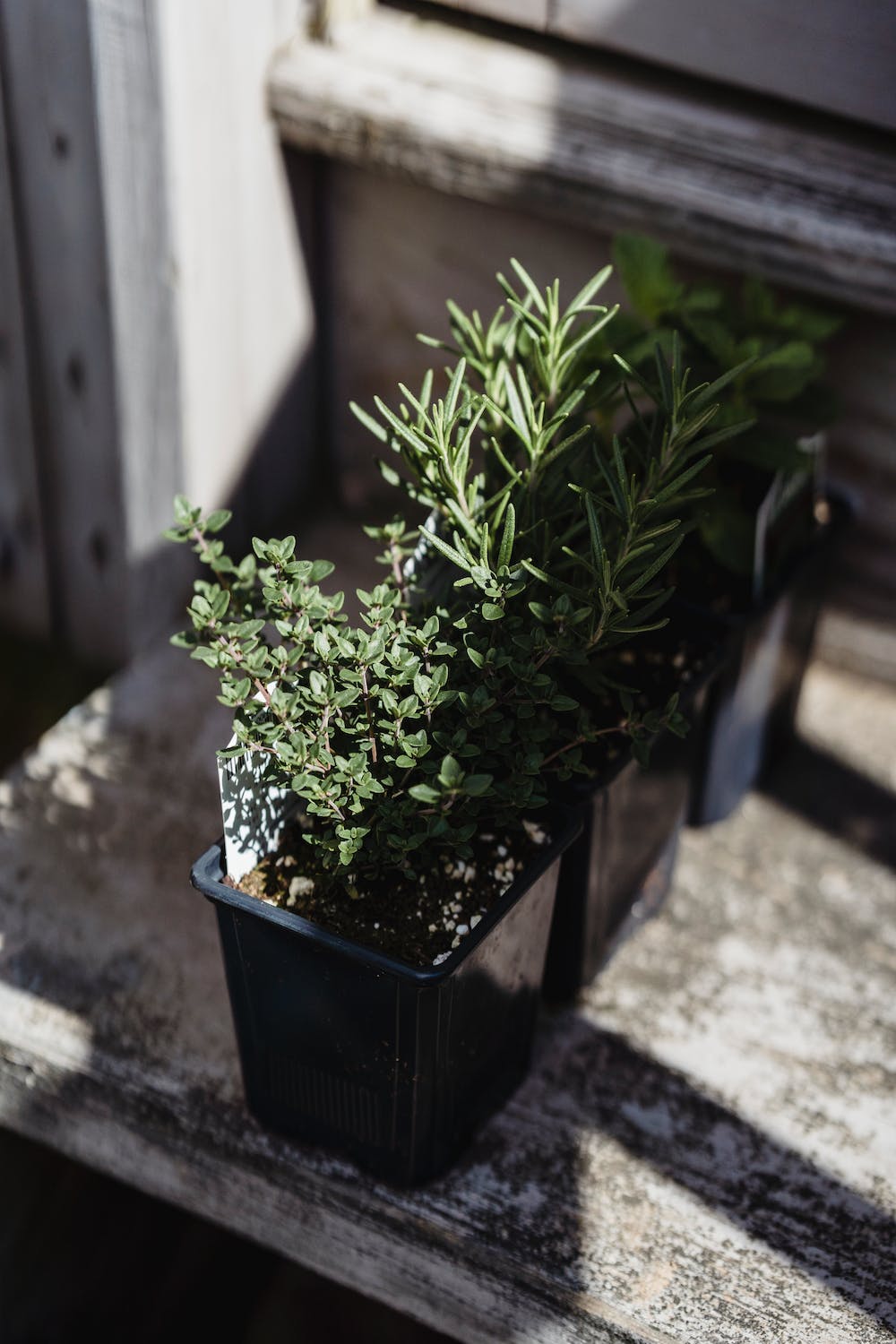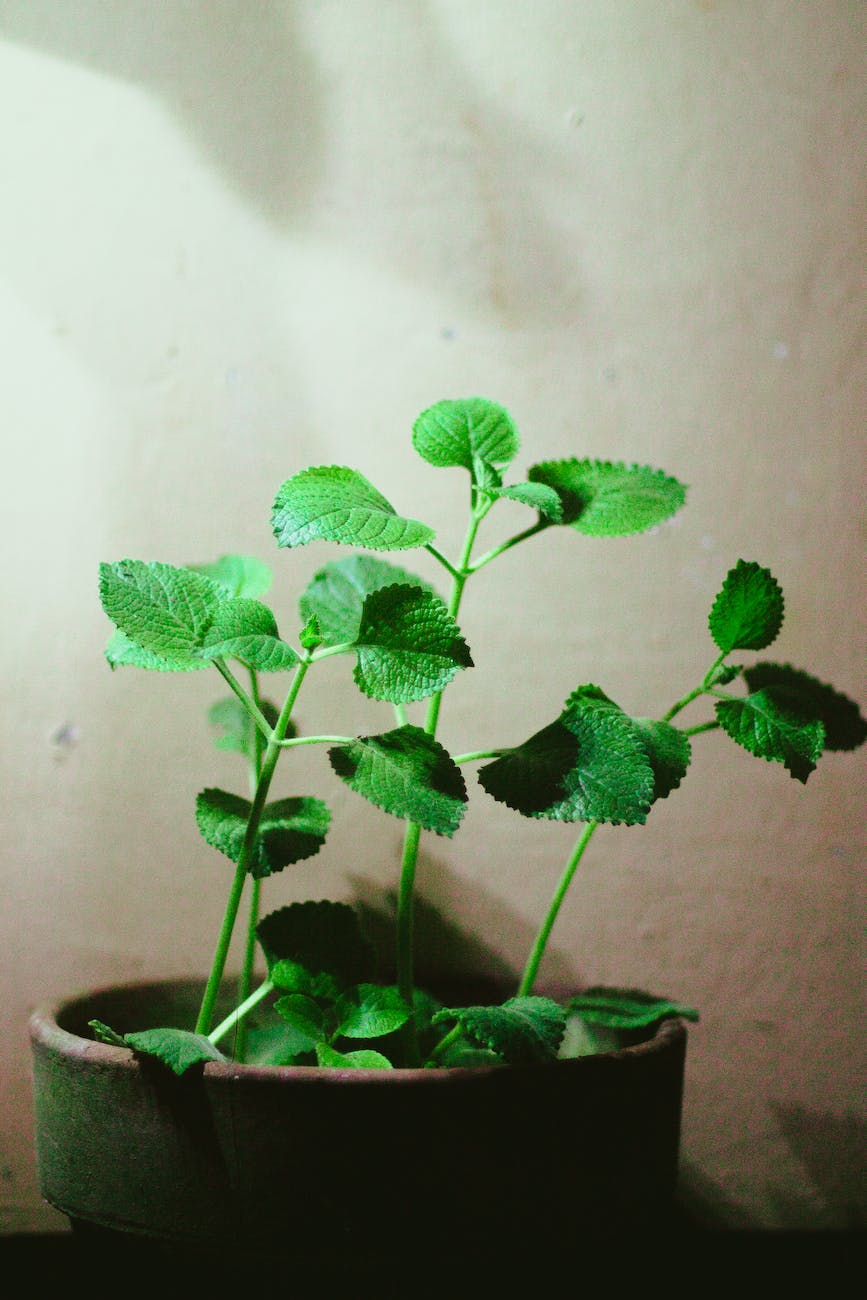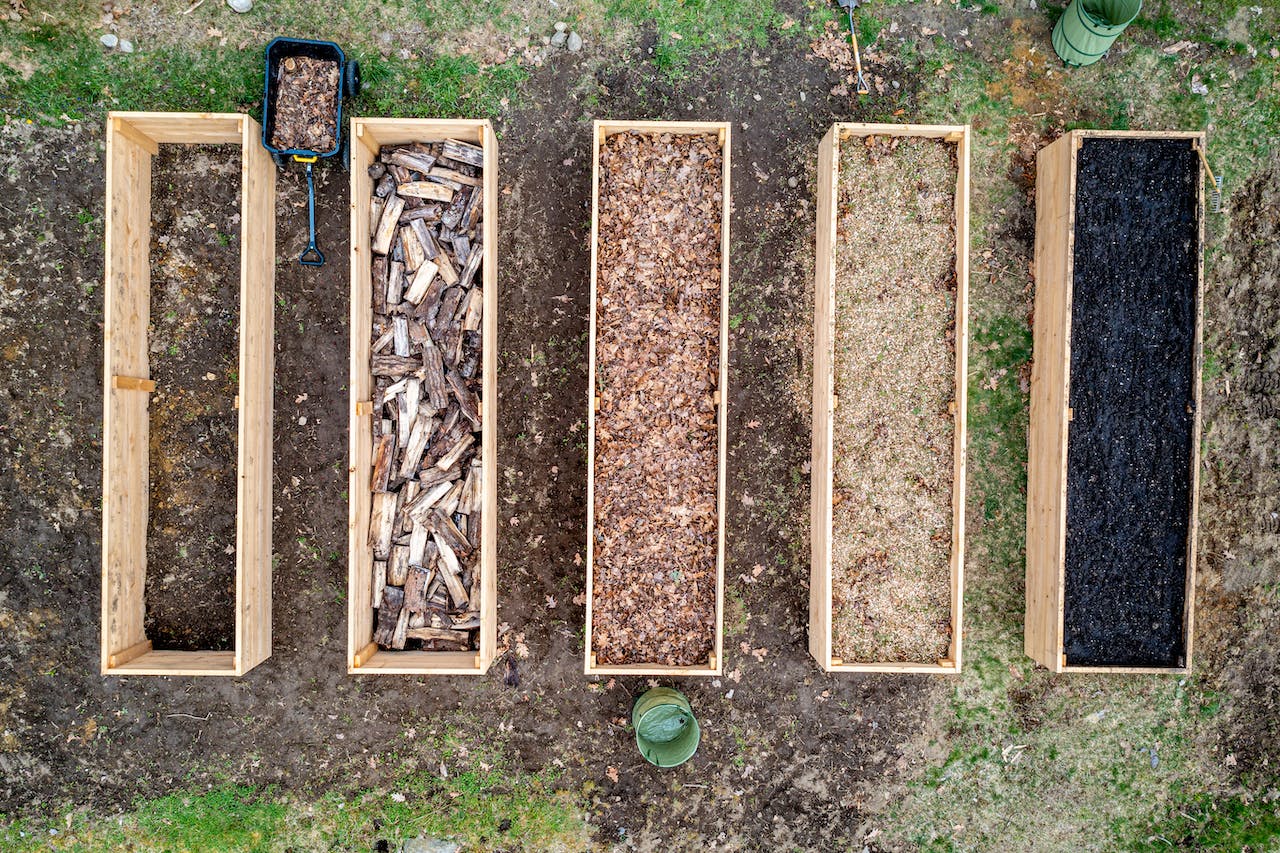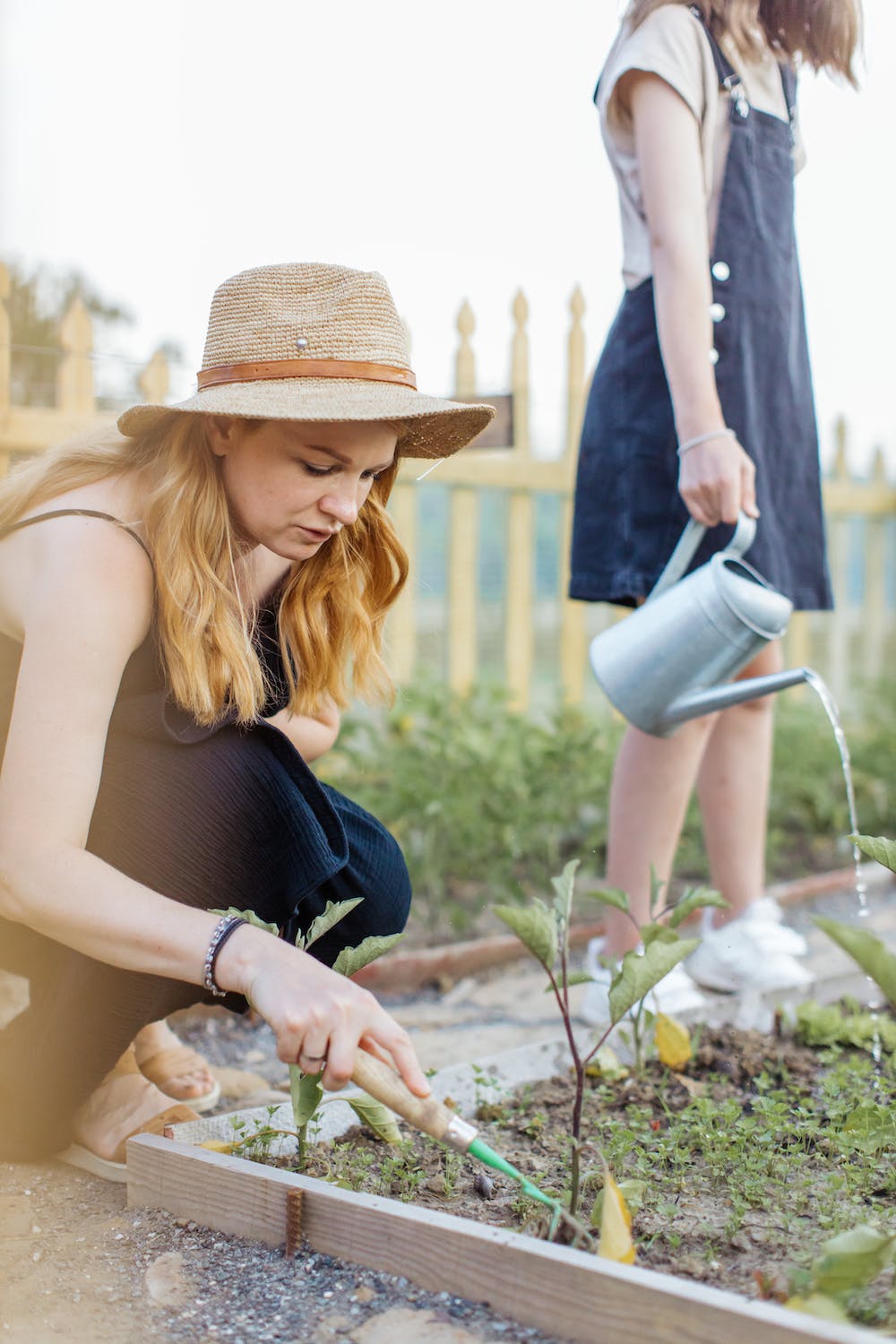
Ever gaze longingly at those sprawling vegetable gardens in magazines, picturing yourself harvesting armfuls of juicy tomatoes and crunchy cucumbers?
Then reality hits: you’ve got about as much outdoor space as a hamster on a treadmill.
Fear not, fellow urban (or suburban) farmers! Cramped quarters don’t have to cramp your gardening dreams. I’m here to tell you that growing a thriving veggie patch is totally possible, even if your idea of a lawn is a patch of moss between the sidewalk cracks.
In this post, I’m spilling the beans (pun intended!) on 9 game-changing tips for vegetable gardening in small spaces. We’ll be talking about container magic, space-saving layouts, sneaky vertical solutions, and the power of pint-sized veggies. So grab your trowel, put on your thinking cap, and get ready to transform your little slice of the world into a bountiful oasis.
Let’s get growing!
Tips For Vegetable Gardening in Small Spaces
#1. Understand Your Space
Assessing Sunlight Exposure and Space Dimensions
Sunlight is crucial for your plants. Most vegetables thrive in full sun, which means about 6 to 8 hours of direct sunlight each day. To figure out your sunlight exposure, spend a day observing how the sun moves across your space. Notice where the light lingers longest and where shadows fall. It’s essential to differentiate between direct sunlight and filtered light, as some vegetables prefer one over the other.
Now, let’s talk about space. It’s not just about how much space you have, but also its shape and layout. Measure your space to get a clear idea of what you’re working with. Whether it’s a narrow balcony or a wide but short windowsill, each dimension will guide what containers you can use and how you’ll arrange them. Remember, a well-planned small space can be more productive than a larger, poorly-planned area!
Identifying Suitable Locations
- Balconies: These are great for small-space gardening. If you have a balcony, check its weight capacity before adding heavy pots. South-facing balconies are ideal for plants that need full sun, but if yours doesn’t get that much sun, don’t worry – leafy greens and herbs can thrive in partial shade too.
- Windowsills: A sunny windowsill is a gem for growing herbs and smaller vegetables. Make sure the sill is sturdy enough to hold the weight of pots with soil and water. Also, consider the temperature fluctuations your plants might experience, especially if you’re opening and closing the window frequently.
- Patios: If you have a patio, you’re in luck. Patios usually offer more flexibility in terms of space and container sizes. You can use larger containers here, which means more room for root growth and, subsequently, healthier plants. However, keep in mind that patios might have varying light conditions throughout the day.
#2. Choose the Right Containers
There are several types of containers for small spaces that you can try:
- Pots: Pots are the go-to for many gardeners, and for good reason. They come in various sizes and materials like plastic, terracotta, or even recycled materials. If you’re tight on floor space, consider smaller pots for herbs or dwarf vegetable varieties.
- Hanging Baskets: These are a fantastic choice for maximizing vertical space. I love using hanging baskets for trailing plants like cherry tomatoes or strawberries. They add a beautiful, lush look to your gardening area and are a real space saver.
- Window Boxes: If you have accessible windows, window boxes can be a wonderful addition. They’re ideal for herbs, lettuce, and other small greens. Plus, they make watering and harvesting super convenient – just reach out of your window!
Proper drainage is the key to preventing root rot and other water-related issues. Here’s what you need to know:
- Drainage Holes: Ensure every container has adequate drainage holes. If your favorite pot doesn’t have holes, drill some yourself (be careful with the material and tools you use!).
- Prevent Clogging: To keep soil from blocking the drainage holes, place a coffee filter or a piece of mesh at the bottom of the pot.
- Trays and Saucers: Use trays or saucers under pots to catch excess water, especially if you’re gardening on a balcony or indoors. This helps prevent water stains on your floors or furniture.
- Monitoring Water Needs: Remember, container plants may need more frequent watering than ground-planted ones, especially in hot weather. However, avoid over-watering. The goal is moist, not waterlogged, soil.

#3. Select Appropriate Vegetables
You can consider some vegetables below that are believed to be best suited for container gardening:
- Tomatoes: An absolute favorite for many, including me! Cherry or grape varieties work particularly well in containers. They need a sunny spot and a sturdy stake or cage for support as they grow.
- Peppers: Both sweet and hot peppers are great for pots. They love the sun and warm temperatures, so place them where they’ll get plenty of light.
- Leafy Greens: Spinach, lettuce, and kale are excellent choices for container gardening. They don’t need as much sun as tomatoes and peppers, making them ideal for slightly shaded spots.
- Herbs: Basil, parsley, cilantro, and chives are just a few of the herbs that thrive in containers. They are perfect for small spaces and can even grow on a sunny windowsill.
- Root Vegetables: Believe it or not, carrots, radishes, and beets can also be grown in deeper containers. They need loose, well-draining soil to expand properly.
- Green Onions and Leeks: These are super easy to grow and don’t require much space. They can be a fun addition to your container garden.
Here’s my little secret: Go for dwarf or bush varieties when possible. These are bred specifically to grow in confined spaces and usually require less maintenance. Here’s what to keep in mind:
- Check Labels: When buying seeds or seedlings, look for terms like “bush,” “dwarf,” or “compact” in the variety name. These are your best bets for container gardening.
- Space Management: Dwarf varieties often produce smaller plants but still offer a good yield. This makes them ideal for maximizing your limited space.
- Caring for Bush Varieties: While these varieties are more compact, they still need proper care – regular watering, enough sunlight, and good soil are key.
- Expectations: Set realistic expectations. While dwarf varieties are designed for small spaces, they might produce smaller fruits or vegetables than their full-sized counterparts.
#4. Utilize Vertical Space
Vertical gardening is a game-changer, especially when horizontal space is limited. I’ve personally transformed tiny corners into lush, productive areas using these vertical techniques.
Strategies for Vertical Gardening
- Trellises: These are fantastic for climbing vegetables like cucumbers, peas, and some varieties of beans. Trellises come in various shapes and sizes. You can either buy them or get creative and build your own from wood or metal. Position them behind the pot, and watch your plants climb up!
- Wall Planters: If you have a bare wall or fence, it’s prime real estate for a wall planter. These are great for herbs, strawberries, and even salad greens. Just ensure they’re securely attached and have good soil depth for root growth.
- Vertical Stands: For those who prefer a ready-made solution, vertical stands and tiered planters are perfect. They’re like multi-story buildings for plants! Great for herbs, small vegetables, and flowers, these stands can be a striking focal point on your balcony or patio.
Benefits of Vertical Gardening in Small Spaces
- Space Efficiency: The most obvious benefit is how much space you save. Instead of spreading out, you’re growing up! This means more room for a variety of plants.
- Better Sunlight and Air Circulation: Plants on vertical structures often receive better sunlight and air circulation than those on the ground. This can lead to healthier plants and fewer issues with pests and diseases.
- Ease of Maintenance: Vertical gardens can be easier to maintain. No more bending over or kneeling for long periods. Watering, pruning, and harvesting can be more comfortable when the plants are at or above waist level.
- Aesthetic Appeal: Vertical gardens are not just functional; they’re beautiful too! They can turn a plain wall or balcony into a stunning green space. It’s like having a living piece of art.
- Microclimate Control: Vertical structures can create microclimates. A trellis with climbing plants, for example, can provide shade for more delicate plants or your seating area.
#5. Optimize Soil Quality
In container gardening, regular garden soil just doesn’t cut it. It’s often too heavy and can lead to poor drainage and root diseases. That’s where high-quality potting mix comes in. A good potting mix is like a magic potion for your plants – it provides the right balance of drainage, aeration, and nutrients.
Look for potting mixes that are specifically designed for container gardening. These mixes usually contain a blend of peat moss, vermiculite, or perlite, and sometimes compost. They’re formulated to hold moisture and nutrients but also to drain well, ensuring your plants’ roots are healthy and happy.
Tips for Enriching Soil with Compost and Organic Matter
- Add Compost: Mixing in some compost is a great way to enrich your potting mix. Compost provides a wealth of nutrients and helps retain moisture. If you’re making your own compost, more power to you! If not, high-quality, organic compost from a garden store works great.
- Use Organic Matter: In addition to compost, other organic matter like worm castings or decomposed leaves can be gold for your plants. They slowly release nutrients and improve the overall structure of the soil.
- Don’t Overdo It: When adding compost or organic matter, a good rule of thumb is to mix about one part compost to two parts potting mix. Too much compost can make the soil too dense for container gardening.
- Refresh Soil Regularly: Over time, potting soil can become compacted or depleted of nutrients. I like to refresh my containers with new compost and potting mix at the start of each planting season. This gives my plants the best possible start.
- Mind the pH: Some plants prefer more acidic or more alkaline soil. You can buy a simple pH testing kit to understand your soil better. Adjusting the pH, if needed, can be done with additives like lime (to reduce acidity) or sulfur (to increase acidity).

#6. Efficient Watering Practices
Methods for Efficient Watering
- Drip Irrigation: This is a fantastic method for consistent, efficient watering. Drip irrigation systems deliver water directly to the soil at each plant’s base, which minimizes evaporation and water waste. You can set up a simple system with a hose, timer, and drip emitters. It’s especially great for busy gardeners, as it can be automated.
- Self-Watering Containers: These containers are a boon for small-space gardeners. They have a reservoir at the bottom that allows plants to absorb water as needed through a wicking system. This method is excellent for maintaining consistent moisture levels and is particularly useful if you tend to forget to water your plants.
Tips to Prevent Overwatering or Underwatering
- Check the Soil: Before watering, do the simple finger test. Stick your finger about an inch into the soil. If it’s dry, it’s time to water. If it’s moist, wait a bit longer.
- Observe Your Plants: Look for signs of overwatering (like yellowing leaves) or underwatering (such as wilting). Plants often tell us what they need.
- Water Deeply, But Less Frequently: This encourages deep root growth, which is vital for healthy, resilient plants. Shallow watering often leads to shallow roots, which can stress your plants.
- Morning Watering: Watering in the morning is generally best, as it gives the plants time to absorb the water before the heat of the day. Evening watering is okay too, but avoid watering in the heat of the day to reduce evaporation losses.
- Use Mulch: Adding a layer of mulch on top of your soil can help retain moisture, reducing the need for frequent watering.
- Adjust According to Season: Your watering schedule should change with the seasons. Plants generally need more water in the hot, growing season and less in the cooler months.
- Be Mindful of Container Material: Remember that porous containers like terracotta pots allow for more evaporation, so plants in these pots might need more frequent watering.

#7. Maximize Sunlight Exposure
Techniques to Ensure Maximum Sunlight
- Rotating Plants: This is a simple yet effective technique. Rotate your pots every few days to ensure all sides of the plant receive equal light. This helps prevent plants from leaning towards the light source and promotes even growth.
- Using Reflective Surfaces: This is a neat trick for areas with limited light. Place reflective surfaces like mirrors, aluminum foil, or even white-painted walls near your plants to bounce additional light onto them. It’s especially useful for plants tucked in corners or on shelves.
Understanding the Light Needs of Different Vegetables
Different vegetables have different sunlight needs, and it’s crucial to cater to these for optimal growth. Here’s a basic guideline:
- Full Sun Vegetables: Tomatoes, peppers, squash, and cucumbers love the sun. They need about 6-8 hours of direct sunlight per day. Place them in the brightest spot you have.
- Partial Sun/Shade Vegetables: Leafy greens like lettuce, spinach, and kale can manage with about 3-6 hours of sun, especially if it’s not all direct. They are more tolerant of shade and can be placed in areas that receive less intense sun.
- Herbs: Most herbs, like basil and thyme, prefer full sun but can adapt to a bit less. Placing them on a sunny windowsill is often a good choice.
Remember, the amount of sunlight your plants receive can be just as important as watering or soil quality. Pay attention to the light patterns in your garden space throughout the day and season, and don’t hesitate to move plants around to catch the sun. This way, you ensure they get their needed dose of sunshine for healthy and robust growth.
#8. Companion Planting
Companion planting is about growing different plants together for mutual benefit. In a small space, this practice is particularly rewarding because:
- Pest Control: Certain plant combinations can naturally repel garden pests, reducing the need for chemical pesticides.
- Improved Health and Yield: Some plants can enhance the growth and flavor of their garden neighbors.
- Efficient Use of Space: By pairing plants with different heights, root systems, and growth rates, you can maximize your limited space.
- Increased Biodiversity: A variety of plants can attract beneficial insects and improve the overall ecological balance of your garden.
Examples of Compatible Vegetable Pairings
- Tomatoes and Basil: This classic duo not only tastes great together in the kitchen but also thrives when planted side by side. Basil can help repel pests like mosquitoes and flies while enhancing the flavor of the tomatoes.
- Lettuce and Carrots: These two make great garden companions. Lettuce has shallow roots and grows quickly, providing ground cover and reducing weed growth. Carrots have deeper roots and can benefit from the loosened soil.
- Cucumbers and Radishes: Radishes are known to repel cucumber beetles and can be a protective companion for cucumbers. Plus, they have different root depths, so they don’t compete for nutrients.
- Peppers and Onions: Planting onions around peppers can help repel certain pests. Both require similar growing conditions, making them good companions.
- Spinach and Strawberries: These two can coexist happily. Spinach can provide some shade for strawberries when the sun is strong, and both have similar water needs.
#9. Regular Pruning and Maintenance
Pruning isn’t just about keeping your plants looking tidy; it’s a crucial step in maintaining their health and vigor. Here’s why it’s important:
- Encourages New Growth: Regularly cutting back overgrown branches and dead leaves stimulates new growth. It helps your plants to focus their energy on producing more foliage and, in the case of fruiting plants, more fruit.
- Improves Sunlight and Air Circulation: By removing excess growth, you ensure that sunlight and air can reach all parts of the plant. This is especially important in small spaces where plants are closer together.
- Shapes the Plants: Pruning lets you control the shape of your plants, which is particularly useful in confined gardening spaces. You can direct growth in a certain way to make the best use of your available area.
Tips for Pest Control and Disease Prevention
- Regular Inspection: Keep an eye on your plants for any signs of pests or disease. Early detection is key. Look for unusual spots on leaves, wilting, or visible insects.
- Prune Affected Areas: If you spot diseased leaves or branches, prune them immediately to prevent the spread. Make sure to clean your pruning tools after each use to avoid transmitting the disease to healthy plants.
- Natural Pest Control: Instead of reaching for chemical pesticides, try natural methods first. Neem oil, insecticidal soaps, and the introduction of beneficial insects like ladybugs can be effective.
- Proper Watering: Overwatering can lead to root rot and other diseases. Ensure your containers have good drainage and water only when necessary.
- Air Circulation: Don’t overcrowd your plants. Good air circulation helps prevent the growth of fungus and other diseases.
Final Thoughts
There you have it, folks! Nine powerful tips to turn your tiny tomato jungle into a reality. Remember, small spaces are just big opportunities in disguise. Embrace the challenge, get creative, and, most importantly, enjoy the journey. Every juicy leaf, vibrant bloom, and sun-warmed veggie you harvest is a testament to your green-thumbed ingenuity.
So don’t be afraid to get your hands dirty (literally!), experiment with different techniques, and let your small space garden surprise you. Soon enough, you’ll be sharing bumper crops with your neighbors (and maybe even convincing them to ditch the grass for some leafy goodness).
Happy planting, and remember, even the smallest gardens can yield the greatest rewards!
P.S. Feeling inspired? Share your own small-space gardening hacks and successes in the comments below! I’d love to hear about your urban jungle magic.





